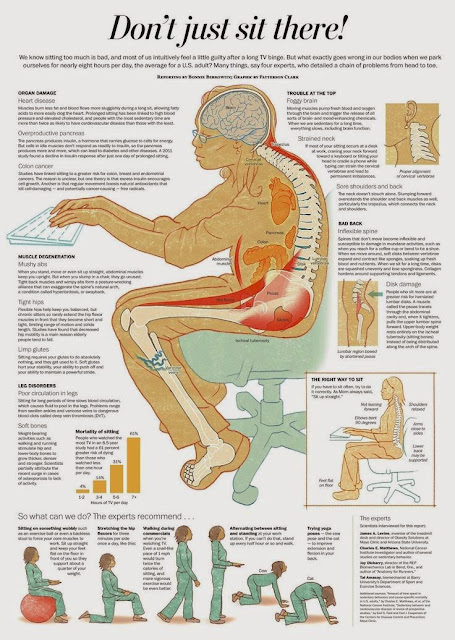Mt Hood View

Wednesday, November 26, 2014
Special Offer Wednesday: Bloom Pilates
Ott Chiropractic NW loves Bloom Pilates!
Pilates is not only great for one's core but for strengthening the entire body as well as centering the mind and bringing an awareness of one's body movements. Bloom Pilates is a warm inviting studio that allows one to freely pursue Pilates in peace. Learn more here at bloompilatespdx.com.
Right now, Bloom Pilates is offering a free Introductory Private Session including 50% off your first package. Stop by today to receive a card good for this offer, while supplies last.
Monday, November 24, 2014
Wednesday, November 19, 2014
Special Offer Wednesday: Try a sample of the Ultimate Healing Cream
If you have
been in our waiting room and have been curious about the jars of the Ultimate
Healing Cream – here’s your chance. Along with the Total Body Wellness and
Total Foot Repair creams, we are offering free samples to anyone who would like
one.
Rather than
dulling your body's signals, the creams work by topically replenishing
nutrients your body needs at the site of pain or injury. Jack, our
receptionist, says his wife raves about using the Ultimate Healing Cream along
with the Total Foot Repair.
Simply stop
by and ask for a free sample to see how these amazing creams can help you
today. We’re limited to the samples we have on hand, so don’t hesitate, come by
today.
Learn more
about the Ultimate Healing Cream, the Total Body Wellness cream, and the Total
Foot Repair cream at the Tropiceel website.
Monday, November 17, 2014
Friday, November 14, 2014
World Diabetes Day
Today, November 14, is World Diabetes Day. The blue circle above is the international symbol for diabetes. Access the International Diabetes Foundation website to learn more about the day.
How is your diabetes awareness? Here are some interesting articles to learn more, and to see if you are at risk for diabetes yourself:
CDC: Living with Diabetes
Time: Obesity is a Big Contributor to Diabetes Boom
American Diabetes Association Expo, November 22
One way to participate and raise one's awareness regarding diabetes is the upcoming American Diabetes Association Expo this November 22 at the Oregon Convention Center. It is a free expo that includes health screenings, cooking demonstrations, products and services, as well as talks from leading experts on diabetes management, behavior change, and prevention. Learn more about the expo here.
Ideal Protein Workshop, December 3 at 6:15pm
Being proactive about diabetes and obesity is another reason why Ott Chiropractic NW recommends the Ideal Protein weight loss program. Besides helping patients successfully manage obesity, Ideal Protein also targets insulin resistance and hyperinsulinemia, two contributors towards adult onset Diabetes Type II. To learn more about how Ideal Protein can help you, everyone is welcome to join our free Ideal Protein workshop on December 3 at 6:15pm. Call to RSVP your seat today!
How is your diabetes awareness? Here are some interesting articles to learn more, and to see if you are at risk for diabetes yourself:
CDC: Living with Diabetes
Time: Obesity is a Big Contributor to Diabetes Boom
American Diabetes Association Expo, November 22
One way to participate and raise one's awareness regarding diabetes is the upcoming American Diabetes Association Expo this November 22 at the Oregon Convention Center. It is a free expo that includes health screenings, cooking demonstrations, products and services, as well as talks from leading experts on diabetes management, behavior change, and prevention. Learn more about the expo here.
Ideal Protein Workshop, December 3 at 6:15pm
Being proactive about diabetes and obesity is another reason why Ott Chiropractic NW recommends the Ideal Protein weight loss program. Besides helping patients successfully manage obesity, Ideal Protein also targets insulin resistance and hyperinsulinemia, two contributors towards adult onset Diabetes Type II. To learn more about how Ideal Protein can help you, everyone is welcome to join our free Ideal Protein workshop on December 3 at 6:15pm. Call to RSVP your seat today!
Wednesday, November 12, 2014
Special Offer Wednesday: Free Ergonomic Posture Consultation
Wondering if your posture is up to par? Curious to know different exercises or tips on how to improve your posture? Looking to elevate pain from sitting at a desk all day? Give us a call and schedule a free Ergonomic Posture Consultation today!
For those interested in learning more about Ideal Protein, we are holding a free evening workshop at 6:15pm on December 3rd. Call us if you would like to attend. Bring a friend. It'll be fun and educational.
Monday, November 10, 2014
Friday, November 7, 2014
November 2014 Newsletter
|
|
|
|
|
|
|
|
|
Wednesday, November 5, 2014
Special Offer Wednesday: 30 minute massage for referrals!
Did you know that Ott Chiropractic NW likes referrals?
Now you do!
Let your family and friends know about the personalized care we provide and encourage them to get the healing they need when in pain. We'll thank you for letting us take care of them with a free 30 minute massage.
Now you do!
Let your family and friends know about the personalized care we provide and encourage them to get the healing they need when in pain. We'll thank you for letting us take care of them with a free 30 minute massage.
Monday, November 3, 2014
Subscribe to:
Comments (Atom)









